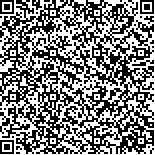下载中心
优秀审稿专家
优秀论文
相关链接
摘要

强对流天气破坏力强,对海上航行和海洋开发都有着很大的影响,但由于其生命史短,且海上气象测站少,因此难以对其进行快速准确的监测。而静止气象卫星的覆盖范围广、时间分辨率高,因此成为了监测强对流天气的重要手段。本文提出了一种利用Himawari-8卫星影像,基于深度信念网络(DBN)进行强对流云团自动识别的方法。该方法分别提取每张图像的光谱特征TBB13、TBB08-TBB13和TBB13-TBB15,以及基于光谱特征TBB08-TBB13的纹理特征能量Energy和对比度Contrast,再参考CloudSat卫星的云分类产品自动构建样本集,利用此样本集训练DBN模型,以确定模型的参数和结构。使用训练完成的DBN模型进行强对流云团识别,并对识别结果进行后处理。通过典型案例分析和精度评定发现,新方法的临界成功指数CSI为71.28%,检测概率POD为84.83%,虚警率FAR为18.31%。结果表明,该方法可以有效识别处于初生到消散不同阶段的强对流云团,并在一定程度上去除检测结果中多余的卷云。与单波段阈值法、多波段阈值法和支持向量机这3种方法相比,文中提出的方法能够提高强对流云团的识别精度。
Disastrous weather caused by Severe Convective Clouds (SCC), such as short-term heavy rainfall, hail, thunderstorms, squall line and tornado, has a serious impact on the life and production over sea surface. Therefore it is very essential to monitor SCC duly and accurately. However, the traditional methods are difficult to meet the requirements due to the short life cycle of severe convective weather and the lack of meteorological stations over sea surface. The geostationary meteorological satellite images have wide coverage area and high temporal resolution, so it has become an important means to monitor severe convective weather. With the rapid development of deep learning, it has been applied in the field of remote sensing image recognition. This paper proposes a method for automatic identification of SCC from geostationary meteorological satellite images based on Deep Belief Networks (DBN). First, in order to identify the characteristic parameters that can be used for recognizing severe convective clouds, the severe convective clouds are analyzed from spectral features and texture features. Second, building automatic recognition algorithm based on deep belief networks which consists of multiple Restricted Boltzmann Machines (RBM) and a softmax classifier. And it is divided into two stages: unsupervised pre training and supervised fine tuning. This method is summarized in the following four steps: (1)data preprocessing: images splicing and region cutting; (2)extracting features and constructing sample sets: extracting the spectral features: TBB13, TBB08-TBB13 and TBB13-TBB15. And extracting the texture features: Energy and Contrast, which extracted based on spectral feature TBB08-TBB13. And then constructing the sample sets automatically referring to CloudSat satellite cloud classification products;(3)training DBN model: determining the structure and parameters of the model, including parameters of RBM and depth of DBN;(4)recognizing SCC using DBN model, and doing the postprocessing: identifying the severe convective clouds using DBN model, and processing the recognition results by category merging, closing operation and edge detection. The Himawari-8 satellite image data and CloudSat cloud classification products from March to May in 2017 were used in the experiment. The research area is 70°E—150°E, 0°N—55°N. After training, the structure of DBN model was setting to 245-140-140-140-135-135-135-9. The accuracy of the DBN model is evaluated with the modified test sample, the Critical Success Index (CSI) is 71.28%, the Probability of Detection (POD) is 84.83%, and the False Alarm Ratio (FAR) is 18.31%. Compared with single band threshold method, multi band threshold method and SVM, the method proposed in this paper can effectively improve the recognition accuracy. The experiment results show that all kinds of severe convective clouds in different phases from initiation to dissipation can be effectively identified. Consequently, it has the advantages of finding severe convective weather in advance. The majority of the cirrus can be removed, but the results of recognition still contain some cirrus spissatus, and the recognition of the cloud edge is not accurate enough, which will be two directions for future research.

